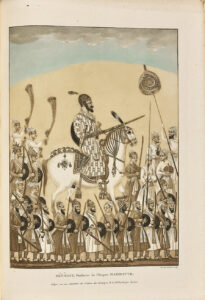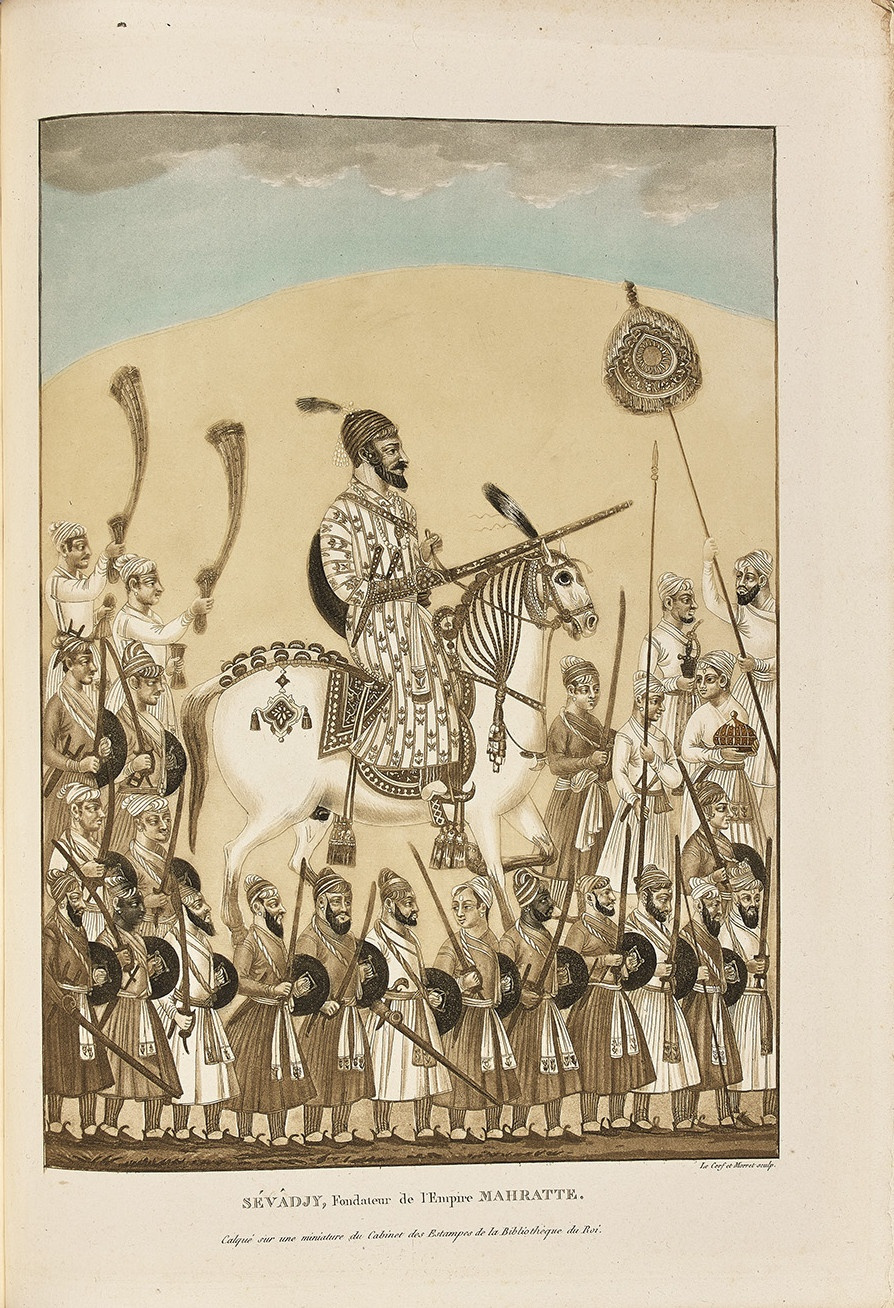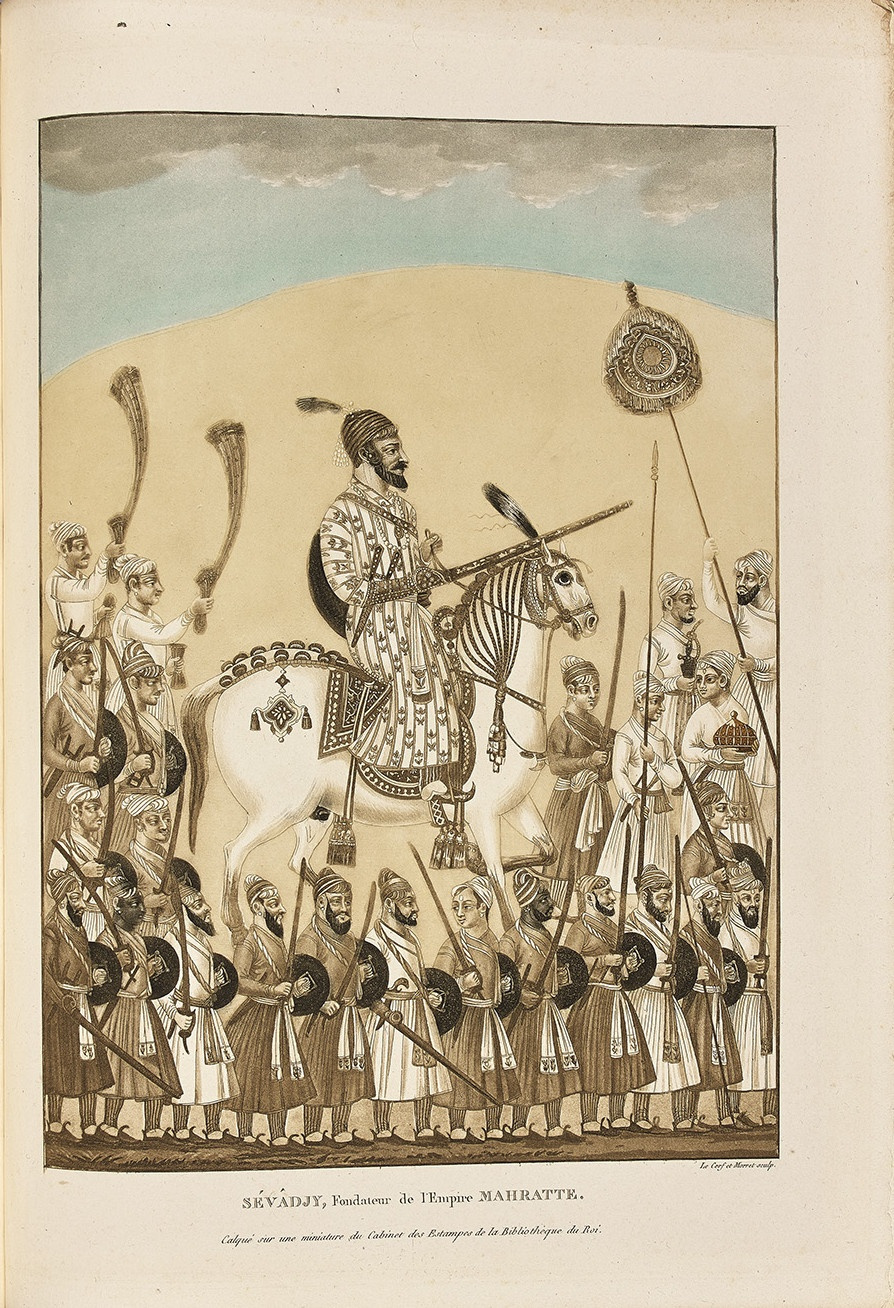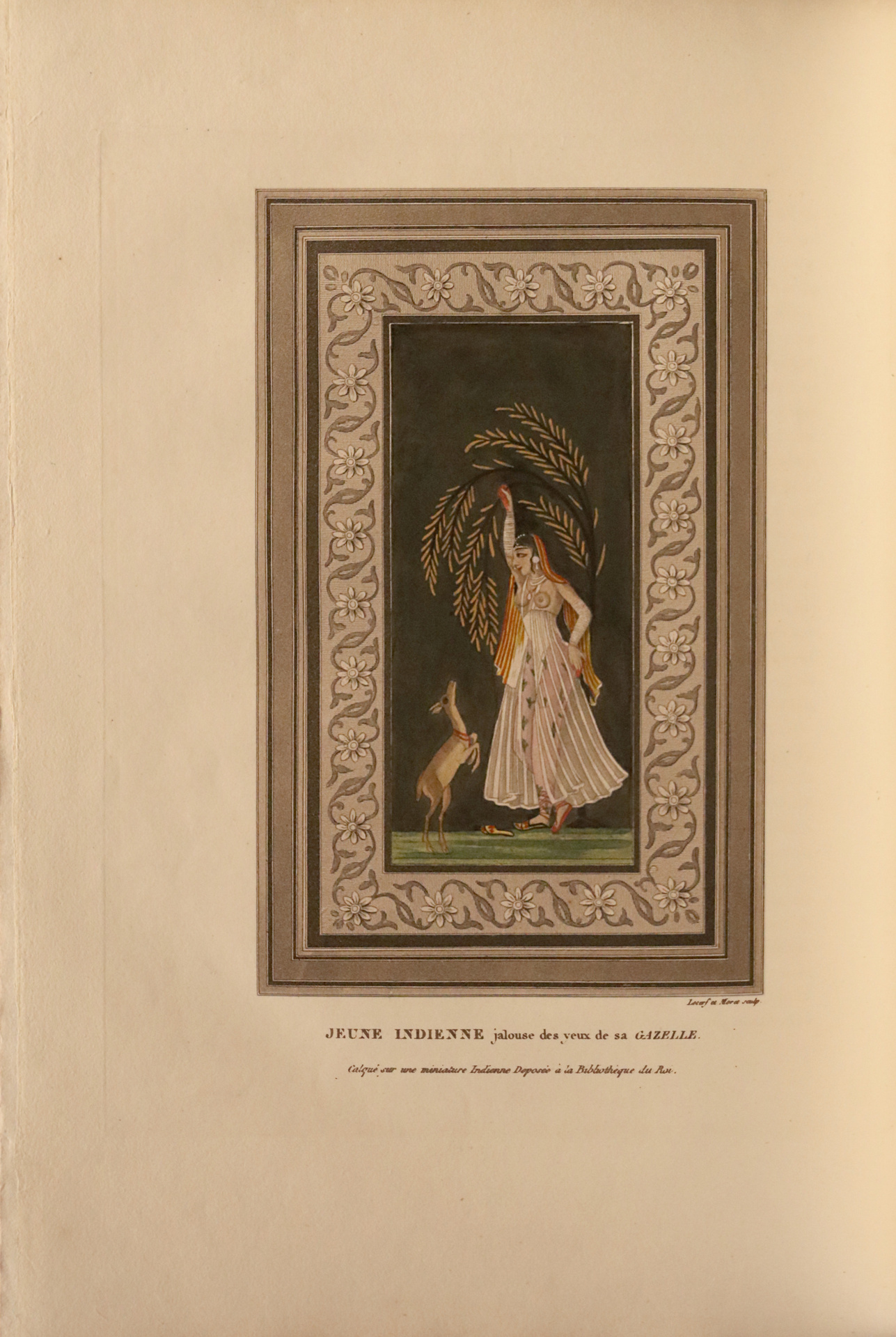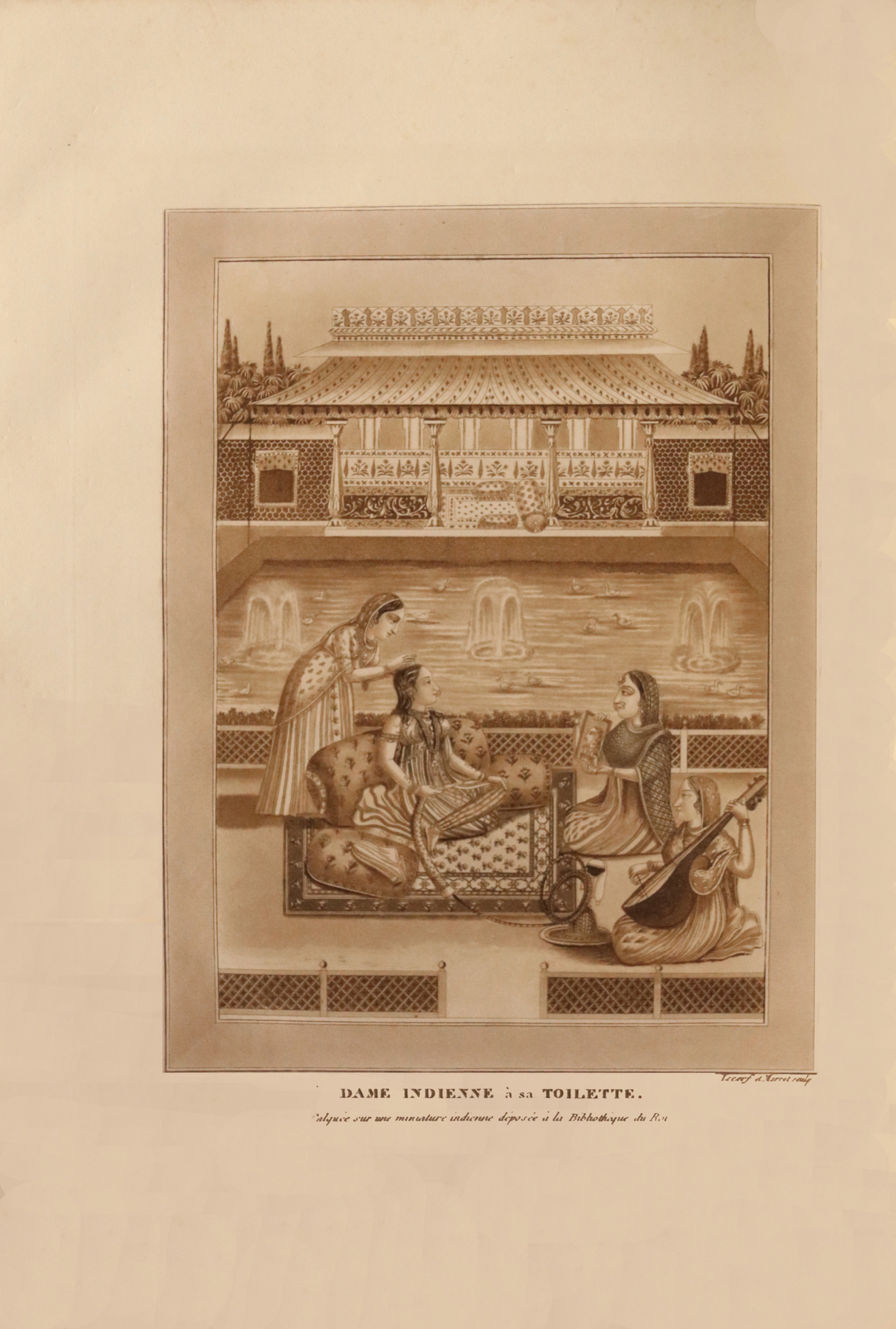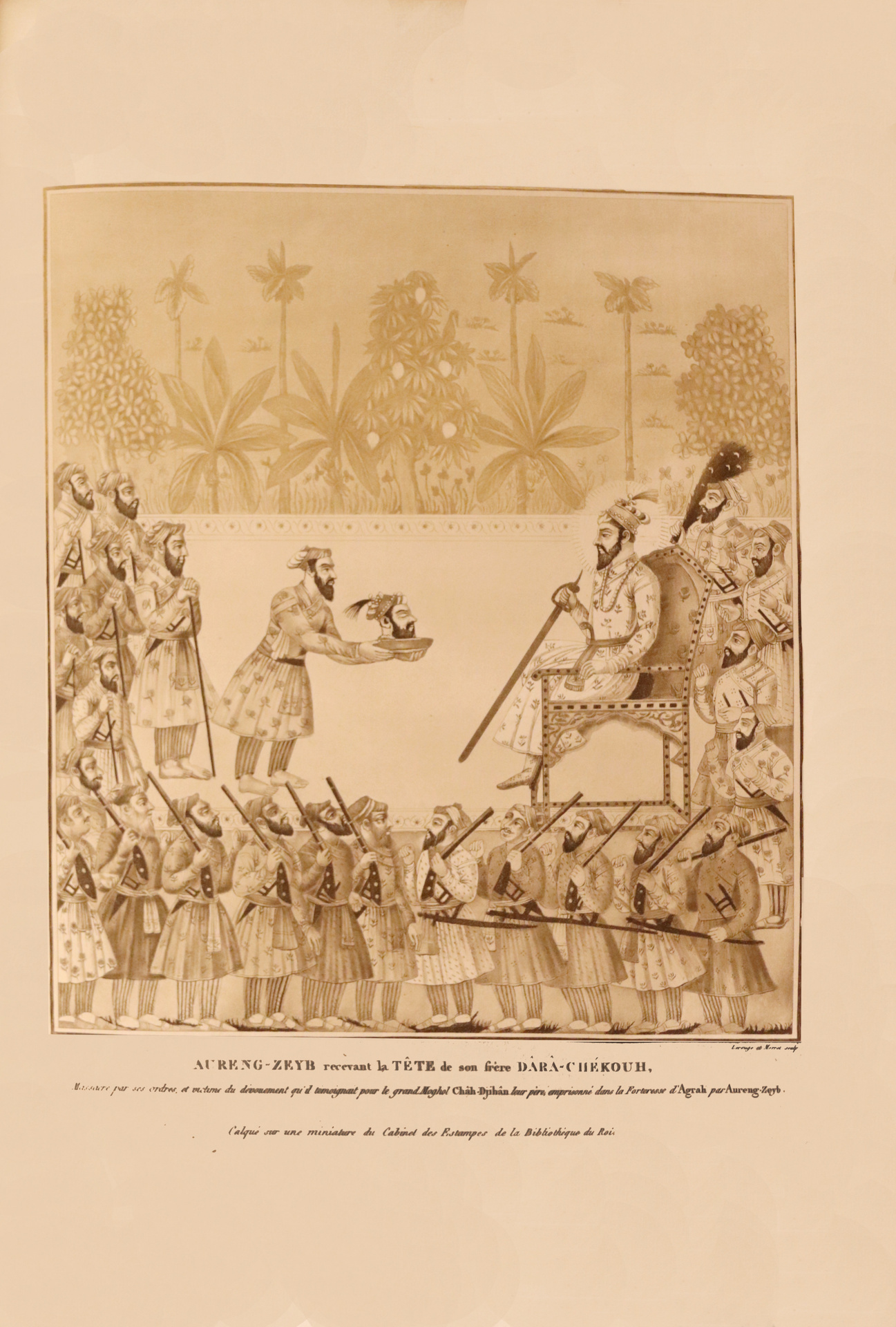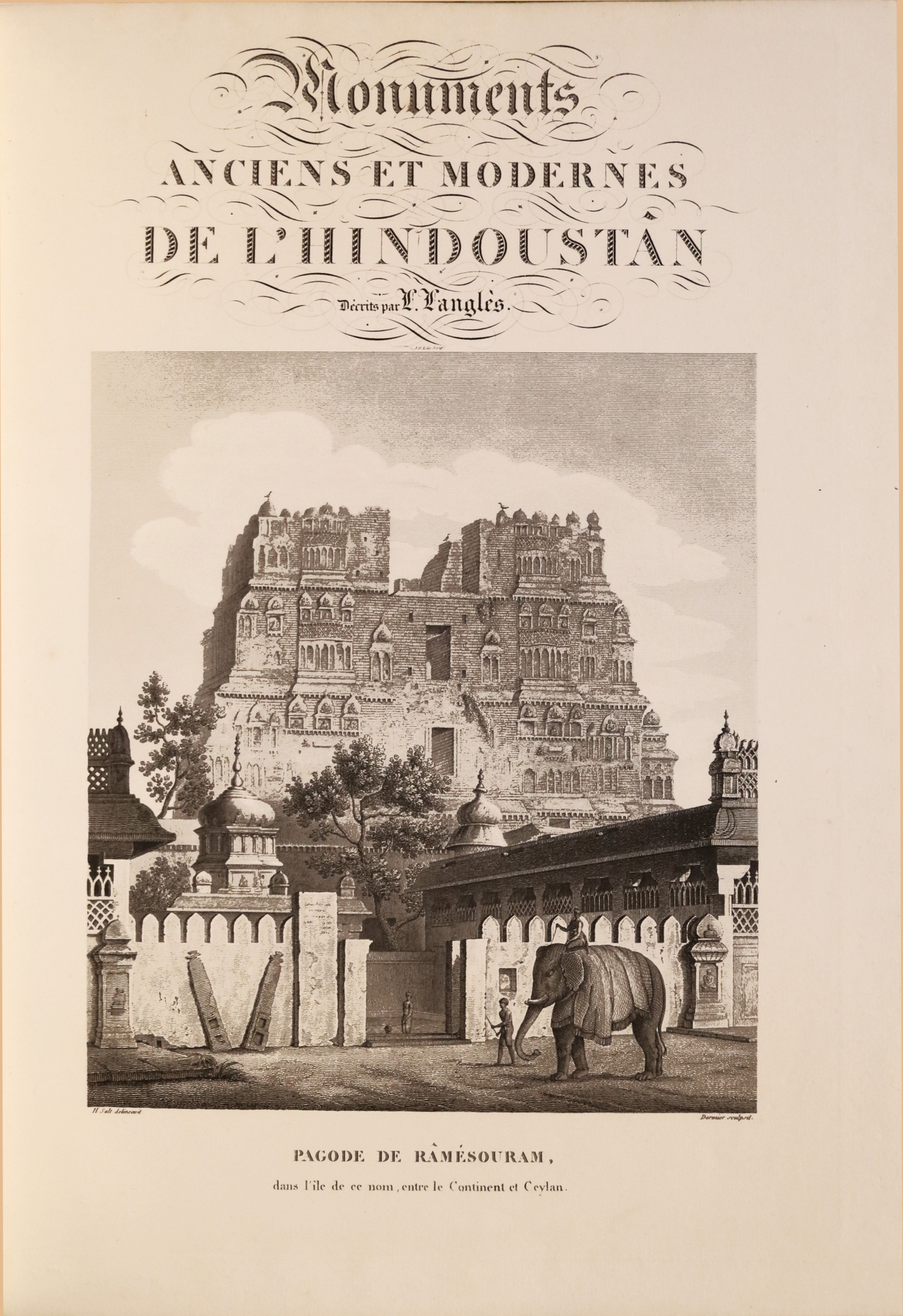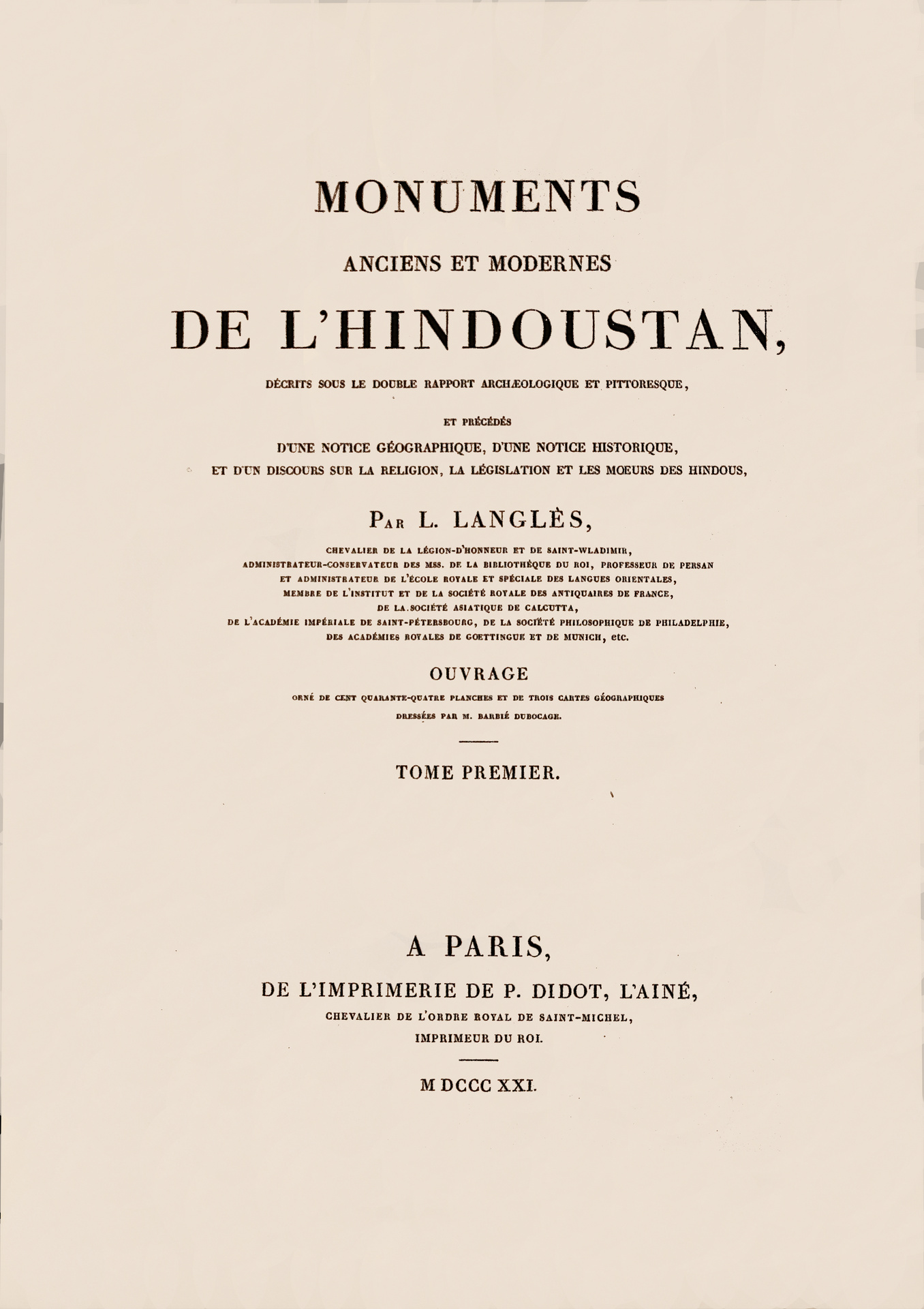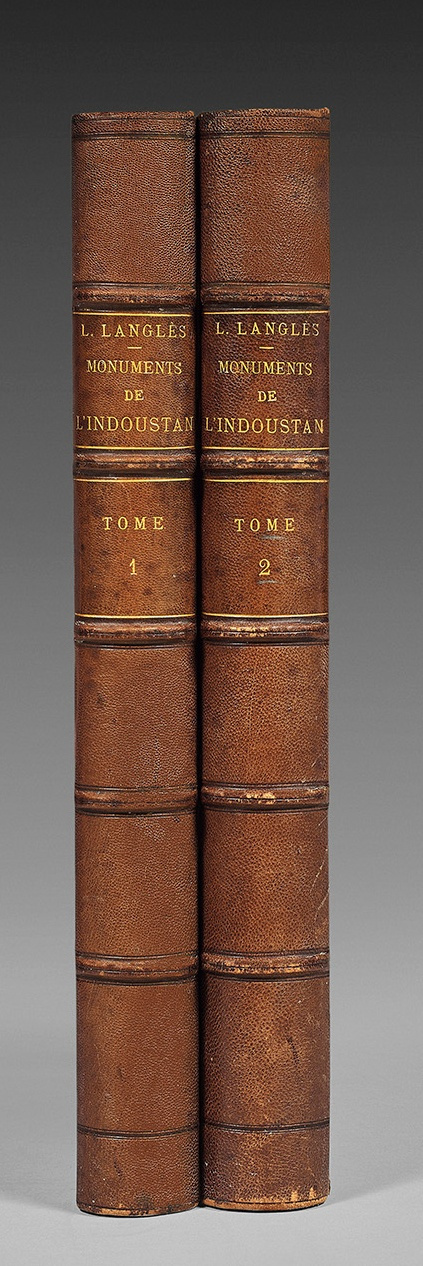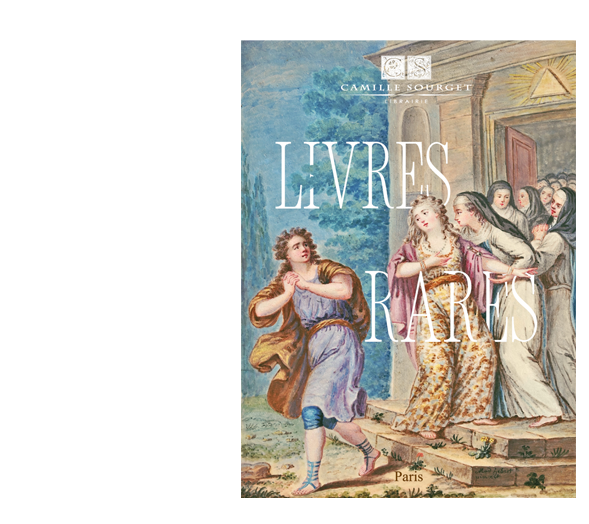Paris, P. Didot L’aîné, 1821.
2 large folio volumes [404 x 291 mm]: I/ (2) ll., 1 engraved frontispiece, 4 pp., xii pp., 268 pp., 1 chart on double-page, 56 plates and 3 maps out of pagination; II/ (2) ll., 251 pp., (1) l., 87 plates out of pagination. Brown half-shagreen, ribbed spine decorated with blind-stamped fillets, untrimmed. Contemporary binding.
First edition of this “very sought-after work illustrated with 3 maps and 144 engraved plates ». (Chadenat, n°5234).
Brunet lists three issues: « ordinary paper : 15 fr. – vellum paper : 24 fr. – Large folio, vellum paper : 36 fr. ».
Precious copy of the luxury issue in large folio size on vellum paper.
“Work published in 26 issues from 1813 to 1821, illustrated with 144 plates and 3 maps, produced under the direction of A. Boudeville.” (Brunet, III, 819-820).
“The great work which Mr. Langles has just finished, and which publication has kept him busy for ten years, deserves, in two different aspects, to fix the attention of educated men. The description of the ancient and modern monuments of Hindustan can only be of great interest to artists and antiquarians. The preliminary discourse and the notes by which the author proposed to introduce his readers to the knowledge of the history of the Hindus, their religion, their customs and their legislation, and finally the geography of the country that they live in, contain the discussion and lead to hope for the solution of a great number of serious questions, on the origin of the ancient systems of philosophy, and the knowledge which has civilized the ancient world […]
The ‘Notice géographique de l’Hindoustan’ occupies 164 pages of the first volume; it is divided into four chapters, the first of which deals with the extent and limits of Hindustan, with its natural and political divisions at different times, and also with the etymology of the name under which we have often referred to this famous country. The last two chapters of the geographical notice are devoted to the description of the main areas and cities of India. The Discourse on Religion, Legislation, values and practices of Hindus, occupies 64 pages … A short notice on the most famous languages of the peninsula and on the oldest Sanskrit books, precedes the exposure of the Brahmans mythological system. The ‘Notice historique de la presqu’ile de l’Inde’ is the last piece of the first volume.
I will not speak of the typographical execution of the work of Mr. Langles: it is such as one can expect it from Mr. P. Didot the eldest; it is enough to say that it leaves nothing to be desired. I will likewise stay silent about the beautiful plates which illustrate the two volumes. I would exceed the boundaries I have set myself, in speaking of those which represent pagodas, hypogea, or other monuments of architecture. As for those who offer costumes, instruments, works of art, figures of gods or heroes, which have been copied from drawings made in the countries, on Indian miniatures, if they can become the object of a few useful remarks, these remarks will not escape the skillful editor who took charge of making up for the insufficiency of this first excerpt.” (Journal des Savants, J.P. Abel-Rémusat, 1822, pp. 220-232).
Louis-Mathieu Langles, born in Welles-Pérennes (Oise) on August 23, 1763 and died in Paris on January 28, 1824, is a French orientalist and librarian. First officer of honor, he is the founder and the first director of l’École spéciale des langues orientales, where he teaches Persian, and curator of oriental manuscripts at the Imperial Library.
“Doubtless it was a vast undertaking to give a complete description of the immense country of Hindostan; to trace its history; to set forth the religion and the manners of its inhabitants; to study and to design its antique monuments and its populous cities: such an undertaking required the united knowledge and talents of the geographer, the philologist, the historian, the philosopher, and the archaeologist. Several estimable artists have already made us acquainted with the picturesque views and the romantic sites of this interesting country, with the various and singular costumes of the Hindoos, and their prodigious monuments. Many learned Indianists have developed the mysteries, till then but imperfectly known, of the Brahmanic theology; and the most celebrated travellers, judicious antiquaries, and well-informed officers, have in almost every part extended their inquiries to the most minute details of topography. However, not one of them has been able to present us with a complete view of the country, whose several parts they have described. Far be it from us to refuse the well-deserved need of praise to the major part of these authors; but one man alone, a man of superior talent, placed in a situation which enabled him to take in with a single glance, to collate, compare, and digest into one body all the materials which had been furnished by so many and such able writers, has succeeded in forming them into one beautiful and symmetrical edifice. M. Langles is the person to whom we allude” (Port Folio, vol. XVI, July to December 1823, p. 252).
The abundant illustration consists of an engraved frontispiece, a chart on double-page, 3 maps outlined in colors and 144 engraved plates of which 17 are in color.
Precious copy especially wide margined as untrimmed, preserved in its contemporary binding.
